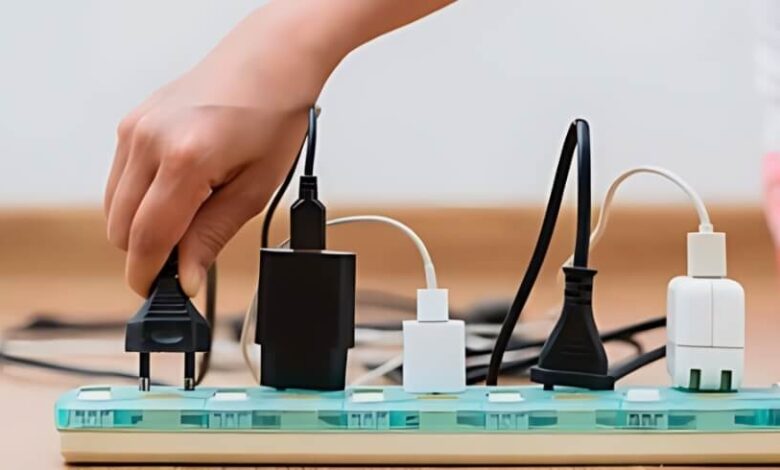Extension Cords: Dos and Don’ts for Safe and Efficient Use

Extension cords are one of the most common household and workplace tools, providing a convenient way to power multiple devices from a single outlet. However, improper use of extension cords can contribute to electrical hazards, equipment damage, or even fires. Understanding the correct way to use extension cords—including the flat extension cord—is essential for ensuring both safety and efficiency. This article will guide you through the dos and don’ts of extension cord usage, highlight critical safety practices, and explain when and how to select the correct cord for your specific needs.
Understanding Different Types of Extension Cords
Not all extension cords are the same. The sort of cord you choose will depend on your environment, the devices you’re powering, and the amount of electrical load required.
Common Extension Cord Types
- Indoor Extension Cords – Designed for low-power devices like lamps, fans, and chargers.
- Outdoor Extension Cords – Weather-resistant and durable for tools, lawnmowers, or outdoor lighting.
- Heavy-Duty Extension Cords – For powering equipment such as compressors, heaters, and large appliances.
- Flat Extension Cord – Ideal for tight spaces such as behind furniture or under rugs, where a bulky cord would be impractical.
By matching the correct type of extension cord to your specific needs, you reduce the risk of overheating, tripping hazards, and electrical accidents.
The Dos of Using Extension Cords Safely
Choose the Right Cord for the Job
Ensure the extension cord you’re using matches the wattage and amperage requirements of your devices. For example, if you’re running a high-powered tool, select a heavy-duty or outdoor-rated cord. For space-saving purposes, a rotating plug extension cord is a good choice for low- to medium-power indoor use.
Inspect Before Each Use
Before plugging in, check for visible signs of wear—such as fraying, cuts, or exposed wires. Damaged connections can cause electric shocks or fires.
Use the Shortest Cord Possible
Longer cords increase resistance and can cause voltage drops, especially with high-powered devices. Choose a cord length that covers the needed distance without excess slack.
Plug into Grounded Outlets When Necessary
If you’re using appliances that require grounding (three-prong plugs), ensure the extension cord and outlet are correctly grounded. Never remove the grounding pin from a plug to fit it into a two-prong outlet.
Store Cords Properly
After use, loosely coil your extension cord and store it in a dry, cool place. Avoid tightly swaddling it, as this can cause internal wire damage over time.
The Don’ts of Extension Cord Use
Don’t Overload the Cord
Every extension cord has a maximum capacity. Exceeding this rating can cause the cord to overheat, melt insulation, and potentially start fires. Check the manufacturer’s specifications before plugging in multiple devices to ensure compatibility.
Don’t Run Cords Under Rugs or Carpets
This is a common mistake that traps heat and can cause the cord to deteriorate faster. If you must place a cord in a high-traffic area, consider using a flat extension cord designed for under-carpet use and with appropriate safety ratings.
Don’t Daisy Chain Multiple Cords
Connecting several cords increases the risk of overloading and tripping hazards. Always use a single cord that’s long enough for your needs.
Don’t Use Indoor Cords Outdoors
Indoor cords lack the weatherproofing needed for outdoor conditions. Using them outdoors can result in electric shock or deterioration from moisture and sunlight.
Don’t Leave Cords Plugged in Unattended
If you’re not using the devices connected to the cord, unplug them. This prevents accidental overheating and electrical hazards.
Benefits of Using a Flat Extension Cord
A flat extension cord offers several advantages over traditional round cords:
- Space Efficiency – Fits behind furniture, bookshelves, and appliances without causing gaps.
- Reduced Tripping Hazards – Lays flat on the floor, reducing the likelihood of falls.
- Ease of Concealment – Can be tucked under carpets or along baseboards (with proper ventilation).
- Flexible Placement – Ideal for home offices, entertainment centers, and tight corners.
However, it’s essential to choose a flat cord that is UL-listed and rated for your intended use to ensure safety.
Extension Cord Safety in Different Environments
Home Use
In living rooms, bedrooms, and kitchens, keep cords away from heat sources, such as furnaces and radiators. Use a flat extension cord in tight spaces where bulky cords would be inconvenient.
Office Use
Avoid running cords across walkways. Secure them along walls or under desks using cord covers. Select cords with surge protection for sensitive electronics, such as computers and printers.
Outdoor Use
Choose heavy-duty, weather-resistant cords for powering lawn equipment, outdoor lighting, or events. Always unplug and store them indoors after use to prevent damage.
Tips for Extending Cord Life
- Keep cords dry at all times.
- Avoid bending or twisting them sharply.
- Use cord organizers or reels for storage.
- Clean them occasionally to remove grime and debris that may cause overheating.
When to Replace an Extension Cord
Signs that you need a new extension cord include:
- Frayed or exposed wires.
- Burn marks or melted plastic.
- Persistent overheating during everyday use.
- Loose or damaged plug ends.
Replacing a worn-out cord is far cheaper—and far safer—than dealing with an electrical fire or damaged appliances.
Conclusion: Safe and Smart Extension Cord Usage
Extension cords, including the versatile flat extension cord, are handy tools when used correctly. By observing the dos and don’ts outlined in this article, you can ensure that your cords last longer, operate safely, and efficiently power your devices without unnecessary risks. Always remember—extension cords are meant for temporary solutions, not as permanent wiring replacements. Choosing the right type, inspecting it regularly, and using it responsibly will protect both your equipment and your safety.




